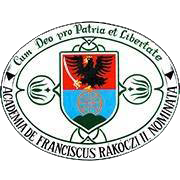Please use this identifier to cite or link to this item:
https://dspace.kmf.uz.ua/jspui/handle/123456789/3489| Title: | Multilingual COVID-19 linguistic landscape in Berehove |
| Other Titles: | Багатомовний COVID-19 у мовному ландшафті Берегового |
| Authors: | Hires-László Kornélia Гіреш-Ласлов Корнелія Матей Рейка Máté Réka Товт-Орос Еніке Tóth-Orosz Enikő |
| Keywords: | linguistic landscape;multilingual signs;Transcarpathia;COVID-19 |
| Issue Date: | 2023 |
| Publisher: | ВПЦ «Візаві» |
| Type: | dc.type.article |
| Citation: | In Філологічний часопис. 2023. Випуск 1 (21). с. 5-17. |
| Series/Report no.: | ;Випуск 1 (21) |
| Abstract: | Abstract. The COVID-19 pandemic has brought severe changes to people’s lives and has influenced all aspects
of our being. The most common attribute of these changes is that we had to comply with regulations that
we had not experienced before, use words and phrases that might have been previously unknown to us.
Tour daily rhythm was radically transformed. The measures taken to stop the epidemic and the social
effects of the pandemic have been examined in many forms. In our paper, we focus on a multilingual town
in Transcarpathia, namely Berehove. The results of our longitudinal study, the trends that emerge from
the data, can be projected not only on the city, but also on its agglomeration and other settlements that are
inhabited by Hungarian speakers. In the linguistic landscape of Berehove, a multiethnic town in the
westernmost part of Ukraine, a number of new signs have appeared after the outbreak of the COVID-19
pandemic, which are an excellent reflection of the multilingual nature in the region and the municipality.
In our study, we present the geosemiotic characteristics of the signs, announcements on epidemiological
restrictions and warnings published in public places in Berehove. We also investigate whether the
advertisements, inscriptions and symbols were made on the official or private level (top-down / bottomup). The photographic data was collected in the course of two years (2020–2021) and clearly shows the
ever-changing multilingual landscape of the territory, and the alternations of different waves of the
pandemic. International literature finds it important to advocate for the appearance of multiple languages
as regards to the linguistic landscape of the virus, precisely because linguistic tolerance towards minorities
in a hard times like the previous years of constant lockdowns, financial and heath crises, is not only a
language policy issue, but also related to health policy. Linguistic landscape, even in these times is not
only a reflection of a territory’s ethnolinguistic and ethno-demographical composition but is shaped issues
of language policy, cultural legacies, language dynamics and attitudes. Резюме. Пандемія Covid-19 серйозно змінила життя людей і вплинула на всі аспекти нашого буття. Найпоширенішим атрибутом цих змін є те, що ми повинні були дотримуватися правил, з якими раніше не стикалися, використовувати слова і фрази, які нам раніше були невідомі. Докорінно змінився щоденний ритм. Заходи, вжиті для подолання епідемії, і соціальні наслідки пандемії було досліджено в багатьох формах. У нашій статті йдеться про багатомовне закарпатське містечко Берегове. Результати лонгітюдного дослідження, тенденції, які випливають із даних, можна спроєктувати не лише на місто, а й на його агломерацію та інші населені пункти, в яких проживає угорськомовне населення. У мовному ландшафті Берегового, багатоетнічного міста на крайньому заході України, після спалаху пандемії COVID-19 з’явилася низка нових вказівників, які чудово відображають багатомовність регіону та міста. У статті представлено геосеміотичні характеристики знаків, оголошень про епідеміологічні обмеження та попередження, розміщених у громадських місцях Берегового. Перевірено, чи були рекламні оголошення, написи та символи зроблені на офіційному чи приватному рівні (зверху вниз/знизу вгору). Фотографічні дані, зібрані впродовж двох років (2020–2021), чітко демонструють багатомовний ландшафт території, який постійно змінюється, і чергування різних хвиль пандемії. Міжнародна фахова література вважає важливим виступати за появу кількох мов у лінгвістичному ландшафті вірусу саме тому, що мовна толерантність до меншин у важкі часи, як, зокрема, у попередні роки, пов’язані з карантином, фінансовою і медичною кризою, є не лише питанням мовної політики, але також пов’язана з політикою охорони здоров’я. З’ясовано, що мовний ландшафт навіть нині є не лише відображенням етнолінгвального та етнодемографічного складу території, але й сформований питаннями мовної політики, культурної спадщини, мовної динаміки та мовною аттітюдою. |
| Description: | http://fch.udpu.edu.ua/issue/view/16744 http://fch.udpu.edu.ua/article/view/281351 |
| URI: | https://dspace.kmf.uz.ua/jspui/handle/123456789/3489 |
| ISSN: | 2415-8828 (Print) 2664-4495 (Online) |
| metadata.dc.rights.uri: | http://creativecommons.org/licenses/by-nc-nd/3.0/us/ |
| Appears in Collections: | Hires-László Kornélia Máté Réka Tóth-Orosz Enikő |
Files in This Item:
| File | Description | Size | Format | |
|---|---|---|---|---|
| Hires_Laszlo_K_Mate_R_Toth_E_Multilingual_COVID_19_linguistic_landscape_in_Berehove_2023.pdf | In Філологічний часопис. 2023. Випуск 1 (21). с. 5-17. | 1.53 MB | Adobe PDF | View/Open |
This item is licensed under a Creative Commons License





